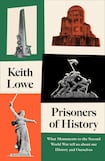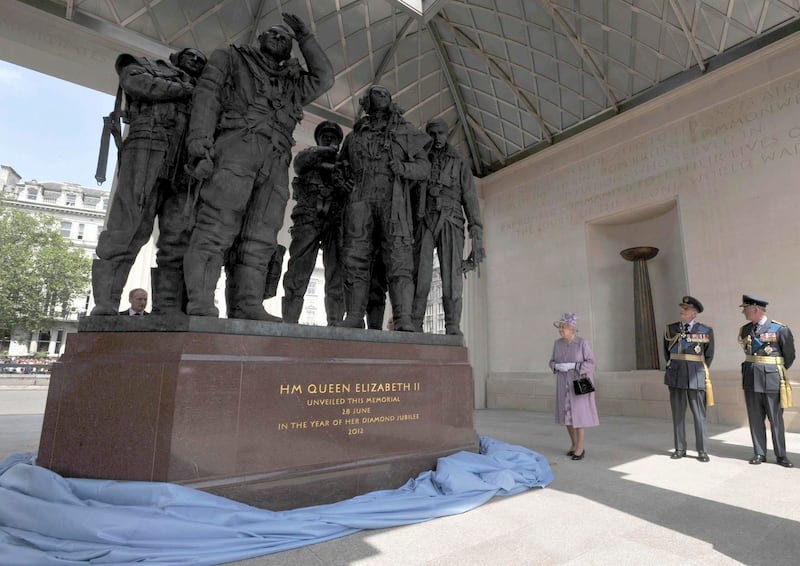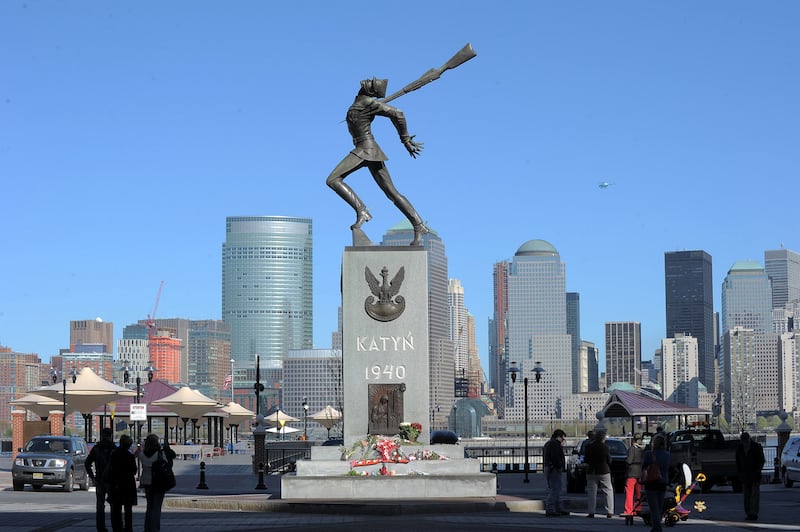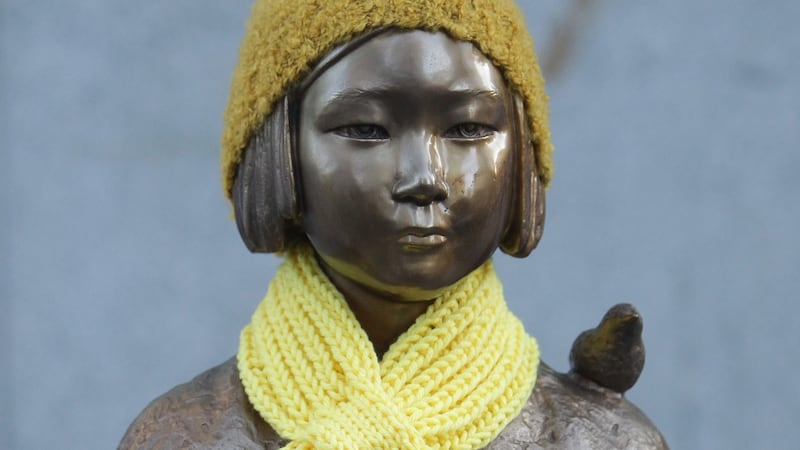
Among the many revelations in Keith Lowe’s new book is that the great second World War memorials across the globe are rarely, if ever, a simple tribute to those who served, suffered and died. The monuments are as much representations of our identities and ourselves and of the ways we choose to use and abuse history.
Looming over Volgograd in southern Russia is a towering statue of a huge female figure stepping forward while brandishing an enormous sword. The image not only captures the vast scale of the battle for Stalingrad – which cost hundreds of thousands of lives – but also serves to symbolise the power and perpetuity of the Motherland to whom one’s loyalty renders even total war endurable - then, now, and in the future.
The Iwo Jima battle memorial in Arlington Cemetery is based on a famous photograph of US marines in the midst of raising an American flag at the top of Mount Suribachi. Although the statue does commemorate the hard-fought US capture of the island from the Japanese, its main message is that the flag the US marines are struggling to fly is a divine symbol of the fusion of God, nation and the American way.

Controversy about the mass bombing of German cities long-delayed the memorial to the UK’s Bomber Command. Inaugurated in 2012, the monument is London’s largest second World War memorial. It consists of a group of seven airmen standing inside a temple-like structure of Doric columns and classical balustrades. The men strike a heroic pose but the inscription says more than 55,000 RAF aircrew died during the war, denoting them as much victims as heroes. It is, Lowe says, “a monument to nostalgia” that evokes “a bygone era when Britain was still a great colonial power”.
On the other side of the world a bronze statue of a serene but determined-looking young woman sits opposite the Japanese embassy in Seoul. The statue represents the Korean “comfort women” who were forced to work as prostitutes for the Japanese military. But not until the 1980s, when South Korea democratised itself, was there any real interest in their trauma. Erected as part of a campaign to force Japan to accept legal as well as moral responsibility for coerced wartime prostitution, the statue, Lowe observes, is an example of “martyrdom as weapon”.

Monuments, memorials and museums dedicated to the Holocaust abound, but that is a relatively recent development. The first Dutch national memorial to the country’s war dead dripped with Christian symbolism, seeking to portray that country’s suffering people as having all been in it together. But the memorial occluded recognition of those who suffered most from Nazi occupation – at the hands of Dutch collaborators as well as the Germans – the country’s Jews, the great majority of whom perished during the war. To be fair to the Dutch, they now have memorials to all the victims of the Holocaust, Gypsies and homosexuals as well as Jews. As Lowe puts it, Amsterdam is a city of monuments to many martyrs.
Across the Atlantic in Jersey City a 10-metre high statue of a bound-and-gagged soldier being stabbed through the back with a bayonet is one of the more striking war memorials. On its plinth are the words “Katyn 1940”. Erected by Polish-Americans to commemorate the Soviets’ massacre of thousands of Polish POWs – a crime they later tried to cover up by blaming the Germans – attempts to relocate the statue in 2018 provoked a storm of protest from the dwindling Polish-American community who felt their history was under attack. Yet the history for which they demanded respect was their own rather than that of Katyn or even the war. Through their successful dissent it became a story of self-empowerment. As one protester wrote on the internet: “I love that memorial. Welcome to Jersey City. Don’t fuck with us.”

Lowe’s tour of famous war memorials divides them into five categories: those for heroes, for martyrs and for monsters plus those that commemorate apocalyptic destruction and/or the hope for resurrection. Each category, he shows, reflects and reinforces the others. Without mass death there can be no collective rebirth. Heroes can be all-too-easily toppled, as evidenced by the fate of Soviet war memorials in the former communist bloc. Monuments to martyrs remain safer, but their power derives from being a counterpoint to memorials to monsters, such as Mussolini’s birthplace shrine, or the map that traces the “topography of terror” in Nazi Berlin.
Lowe’s book went to press before the current wave of anti-statue protests, but he notes of previous similar events that “tearing down monuments does not solve our history; it simply drives that history underground. While a monument still stands, it will always need to be confronted, discussed”. The way to deal with out-moded monuments is, rather, to move them, contextualise them and/or ridicule them, as the Lithuanians did when they despatched Soviet-era statuary to a “Stalin’s World” theme park.

Among the sites of apocalypse Lowe surveys are the preserved ruins of Oradour-sur-Glane – the French village whose inhabitants were massacred by the Germans in 1944 – and those of Coventry Cathedral, bombed by the Luftwaffe in 1940, but which features “not the symbols of destruction…but those of rebirth and reconciliation”.
More offbeat is Lowe’s selection of the UN Security Council’s mural, which depicts both the dark past of the war and the bright future of the postwar world. But by the time Norwegian artist Per Krohg had finished painting, the UN’s peace project was in tatters as the superpowers waged a cold war while an actual war raged in Korea.
Memorials come in all shapes and sizes. A hiking trail that follows the paths of western armies in 1944-1945, Liberation Route Europe, contains no new monuments. Instead, it is an attempt, writes Lowe, “to create a mythological space somewhere between history and memory, where people walking the trail can begin to feel part of something much greater…to feel an emotional connection to…the liberation of Europe.”
Unfortunately, most of Central and Eastern Europe, liberated by the Red Army, is excluded from the trail. Yet without the Soviets, there could have been no allied invasion of Western Europe, Hitler would have won the war, there would be no Liberation trail, and no war memorials, except those glorifying Nazis and Fascists.
Prisoners of History is the latest in a series of fine books about the second World War by Lowe. Based on interviews, personal observation and detailed research, it is a compelling and fascinating read.
Geoffrey Roberts is Emeritus Professor of History at University College Cork and a Member of the Royal Irish Academy















